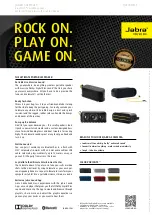
Computer Optimised
Bass Driver
Hardened
Floor Spikes
Surgical grade, anti-
magnetic, stainless steel
M8 floor spikes define the
vital mechanical interface
between speaker and
the floor of the listening
environment.
A steel leaf-spring
defines the interface
between enclosure and
plinth and decouples
above 12Hz.
The pressure die-cast
plinth incorporates
enclosure interface
locations, housing for
the crossover, and floor
spike fittings with top-
access adjustment.
Die-cast
Plinth
Incorporates features
on its mating surface
that consistently define
its interface with the
cabinet and help manage
vibrational energy.
FEA Modelled
Driver Chassis
Decoupling
Leaf Spring
The crossover
incorporates state of the
art components including
laminated and air-cored
inductors, and metallised
polypropylene capacitors.
Computer-modelled
Crossover
The enclosure is
constructed from a
combination of 25mm
and 50mm panels
comprehensively braced
to provide a rigid, non-
resonant and low diffraction
reference plane for the
drivers. Selected panels also
benefit from strategic mass-
damping, and the internal
bracing includes a division
that creates separate loading
volumes for each bass driver.
Rigid Multi-composite
Enclosure
The Ovator Balanced Mode Radiator (BMR) constitutes its most visible technological
advance, yet its performance is equally the result of painstaking refinement in
numerous elements of design, construction and material selection. For example,
there is so much more to the musical reproduction of bass than low frequency
extension, so the Ovator LF drivers are designed not simply to play bass, but to do
so with faultless musical accuracy. They incorporate a multitude of electro-acoustic
details aimed at minimising distortion and compression, and the result is extended
bass with peerless timing, dynamics and pitch accuracy. One vital element in the
design of a high performance bass driver is its chassis. Great rigidity and an open
structure are vital but potentially conflicting requirements, so the Ovator pressure
die-cast bass driver chassis incorporates a triangulated framework, the product of
finite-element analysis, that ensures both rigidity and unimpeded air passage.
Ovator crossover networks are housed within the plinth and divide the audio signal
between bass drivers and BMR with fourth order acoustic slopes at 380Hz in the
case of the S-600 and 700Hz in the case of the S-400. Each component selection is
the result of intense technical analysis and significant listening, and the component
arrangement is fundamentally informed by the layout and earthing techniques
developed for Naim power amplifiers. A crossover module suspension system and
individual component decoupling ensures any chance of microphony is minimised.
Conversion to either bi-amp or tri-amp active drive is easily achieved through removal
of the crossover module*.
Just as much as it is BMR technology, it is the fine detail and the sum of the parts –
the result of decades of speaker experience and development – that make the Ovator
S-600 and S-400 so remarkable.
*Please note that the S-400 active crossover will not be available until late 2011.
The Ovator up close
Ovator bass drivers feature rigid paper cones, natural
rubber surrounds and aluminium demodulations
rings within their neodymium magnet systems. The
S-600 bass drivers additionally incorporate generous
pole-piece ventilation. The linearity and resistance to
compression of both Ovator bass drivers is outstanding.
Содержание OVATO
Страница 1: ......

























